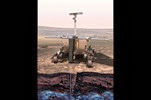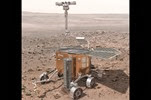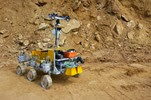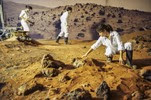
Engineers working on rovers that are destined to explore the surface of other planets usually turn to desolate deserts to test out their gear – it’s the closest they can get in terms of terrain and conditions without actually making the trip, just like astronauts who train in pools to simulate low gravity.
Whereas NASA has a lot of experience with rovers of all shapes and purposes, the European Space Agency (ESA) does not. They can build a super-high tech satellite, but as far as exploring the surface of other planets goes, America is the unrivaled leader.
ESA needs to burn through some of the stages, and catch up, in order to make their planned 2018 mission to Mars not only possible, but successful too. It’s a very complex operation requiring multiple vehicles, and the final piece of the puzzle will be a rover that just began its field testing phase, in prototype form, in the very Mars-like environment of the Atacama desert in South America.
The six-wheeled bot nicknamed ‘Bridget’ will be put through its paces over the course of a week, in which time the scientists accompanying it will run a series of experiments, as well as calibrating some of the on-board navigation gear.
It definitely won’t travel far during said week, because it just look so painfully slow… I mean, there’s no speed limit on Mars, and all the wheeled vehicles we sent there so far are all on the tortoise side of the scales – they could get a lot more done this way.
Story References: ESA via Gizmag














